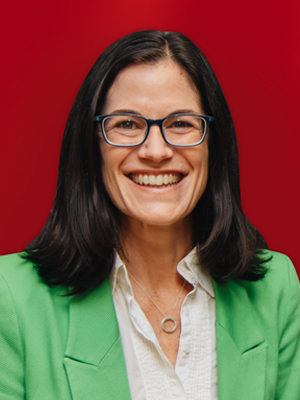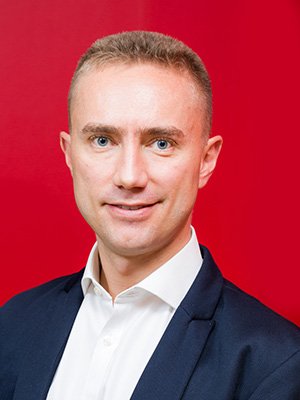
27 Mar Are you investing enough offshore?
As published by Sanlam Glacier on March 27, 2020 by Kyle Wales
The answer to this question has experts divided.
Some believe that, with the multitude of political and economic issues South Africa is currently experiencing, investors should be taking as much money offshore as possible.
Others are of the belief that South African assets offer compelling value at these levels. Domestically focused companies have seen their share prices perform poorly for a number of years, and earnings multiples are at multi-year lows.
The currency also remains weak. We are reminded that a similar situation existed in 2002, where those who took money offshore did so at very unfavourable exchange rates and significantly under-performed those who remained invested in South Africa over the ensuing decade.
At Flagship we don’t believe either side is 100% correct
We argue that the primary reason for taking money offshore is to diversify your investment portfolio. Despite a multitude of investment opportunities available to them, the overwhelming majority of South Africans remain heavily exposed to South African assets.
Put simply, your savings should ideally take advantage of the global opportunity set available to you, and only a part of this opportunity set sits within South Africa
As we will later show, it may be prudent to diversify either by using the available offshore allowances to invest money overseas or by using Rands to buy offshore exposure “onshore”, using unit trusts or other vehicles.
Currently South Africans have a discretionary allowance of R1 million annually and a foreign investment allowance which allows them to take a further R10 million offshore annually if they apply for a tax clearance certificate[1].
A good starting point to assess whether you have sufficient offshore exposure is to: (1) calculate your ‘true’ SA and offshore exposure; and (2) decide what level of offshore exposure is appropriate for you.
Step 1: Calculate what your ‘true’ domestic and offshore exposure is
Let’s use an example of a 45-year-old professional who earns R1.2 million before tax per year (for simplicity sake I will assume he is a male). He has a house with a value of R2.6 million on which he still owes R1 million. He has a pension fund amounting to R4 million. Having managed to put some money away over the years he also has a unit trust portfolio of R400,000 which is invested in South African shares.
The interesting thing to note here is that his largest asset is not his pension fund. Rather it is the present value of the 240 monthly salaries he will earn until he retires[2].
This equates to R16 million rand if one discounts these salaries back using a 5% real return which is what he could hope to receive if he invested the equivalent amount in an aggressive balance fund.
As he has a bond on his house, this asset contributes only R1.6 million to his net worth and not the full R2.6 million.
This person’s net worth is thus: value of his future earnings (R16 million) + pension (R4 million) + house (R1.6 million) + share portfolio (R400,000) = R22 million.
In determining the split of offshore versus onshore, it is clear that the present value of his future earnings is South African in nature. Ditto his house.
Looking at the table below, the only truly offshore exposure is a mere 5% of his personal wealth, being the portion of his pension and unit trust portfolio that is invested offshore[3].

Step 2: Decide what level of global exposure is appropriate for you
The final step is to decide what level of global exposure is appropriate for you. Here things get a little more complex, but the following comments may be helpful in guiding you…
The first point to make is that the decision to live in South Africa (or not to live in South Africa) is less relevant to the argument than you may think. Even if you choose to live in South Africa, a large part of what you consume is globally priced in dollars and not Rands. This would include petrol, electricity (which is generated from coal, also priced in dollars), basic commodities like maize and wheat, anything else you consume that is imported.
The second point[4] is the rand has depreciated by 7% p.a. against the US dollar over the last ten years which far exceeds the inflation differential between South Africa and the USA. While you may argue that South Africa has experienced a particularly torrid decade and things may improve going forward, this misses the point.
The point is that the rand can continue to depreciate against the dollar and it is the risk of that happening which you are trying to protect yourself against by having a properly diversified portfolio.
Finally, bear in mind that South Africa accounts for only 0.52% of global GDP[5]. The level of global diversification implied in the theoretical portfolio we have constructed above, is akin to someone having a 95% exposure to a share which is 0.5% of the JSE ALSI Index. An anecdote which may illustrate how absurd this is: when Naspers had outperformed other South African shares by too large a margin, the JSE introduced a new index (the capped SWIX Index) to limit its weight to 10% of the index[6].
Calculating your ‘true’ offshore exposure will likely highlight the sensibility in diversifying your investment portfolio.
While a salaried employee cannot control where his job is based, or where his house is located or how much of his pension fund is invested offshore, he can control how much he saves on a discretionary basis and how he applies those savings.
The only practical way of improving your global diversification is to save as much on a discretionary basis as possible and to invest most of those savings globally rather than domestically. This should be done incrementally and on a consistent basis so that you are less exposed to taking your money offshore at an unfavourable exchange rate.
Finally, the portion that you do take offshore should be invested more aggressively than the rest of your portfolio so it is given the opportunity to compound at a higher rate*.
* Disclaimer: This should not be construed as investment advice. Every individual’s financial circumstances are different. Before making investment decisions you should seek advice from a qualified investment adviser.
[1] As at 13 February 2019
[2] Assumes retirement at age 65. Calculation = (R1.2 million * 0.67 (to adjust for tax))/5% (being the real growth rate, assuming inflation of 4%)
[3] Note offshore exposure for regulation 28 funds is limited to 30% (excluding Africa), and we assume for the purpose of this exercise that 25% of both our hypothetical investor’s pension fund and unit trust portfolio is invested offshore. If he was a government employee, only10% of his pension fund would be invested offshore because the Government Employee Pension Fund had only invested 10% of its assets globally as at 6 December 2019.
[4] Measured from 31 December 2009 to 31 December 2019
[5] As at 2017
[6] FTSE-JSE Capped Indices Brochure
Kyle is a co-portfolio manager of Flagship Asset Management’s global funds.




















